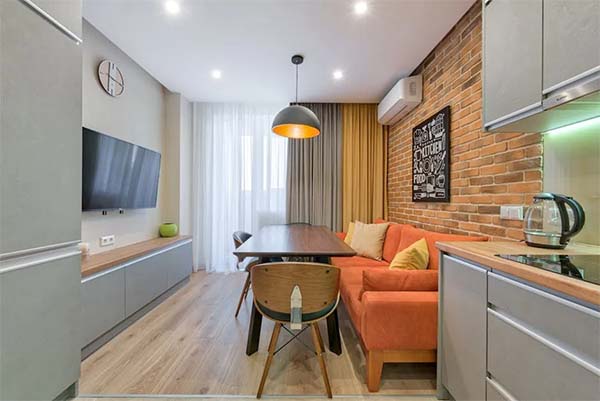Recently, many people have come to me and asked me if there are formulas or principles that they would like to know if there are any that they can follow when doing interior design in order to develop a design around a focus that is both efficient and foolproof.
It’s not really a difficult question to say, but it does take some thought to say it’s easy. Today, we’ve compiled a list of the top 10 principles of the interior design process to help take the guesswork out of it.
Here’s the kicker, grab your notebook!
Firstly, prep is crucial.
Before starting any interior design project, you need to conduct thorough research and investigation to clear your mind. Record the dimensional data of the room, paying particular attention to special features such as the position of radiators, the direction of door sliding (which may affect the opening and closing of windows as well as the choice of carpet).
It is also crucial to understand the client’s preferences. It is important to start designing according to the client’s personality, lifestyle and working style, to determine the client’s style bias and to set a general direction in colour selection first.
Principle 1: clear purpose and function
The first principle of interior design is to conform to the purpose of use. Therefore, we need to make an assessment at the outset to determine how best to utilise the building.
◆ Consider how often the room will be used.
◆ The time period when it is most frequently used.
◆ Who the users are.
◆ Whether there is a need for a formal place to entertain guests (this will affect the overall style and appearance).
◆ Whether there is a need for multi-purpose space
◆ Whether there are passageways to other parts of the house.
Principle 2: determine the design style
Style is the combination of objects through the form of art to show the unique taste and connotation. We need to carefully arrange and combine the various pieces of furniture to form a complete unit by choosing a main colour or a design theme.
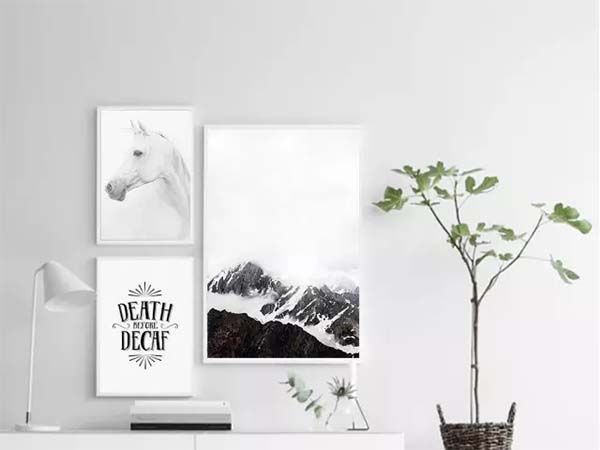
◆ It is important to consider whether the client wants to emulate a particular period style.
◆ Whether the furniture has a particular style or can reflect a particular style.
◆ Whether there are objects in the room (e.g. paintings, sculptures, furniture) that define or reflect the style you want for your living space.
Principle 3: consider space and shape
Interior design needs to follow a certain logical process to ensure that we can enjoy indoor living easily and comfortably. To accomplish this, you need to analyse the room type, measure the area, and consider what furniture will be placed and where it will be placed.
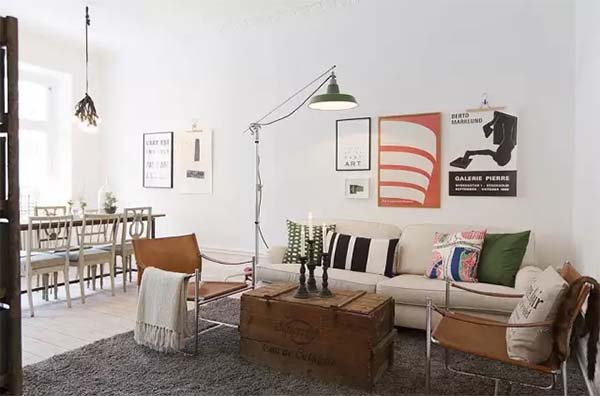
◆ Consider how much space the client wants to decorate.
◆ Whether they want to make a large space look more cosy or open up a smaller space within a larger one.
◆ How to choose furniture effectively.
◆ How to utilise the space effectively if the room is irregularly shaped (e.g. rounded walls).
Principle 4: focus on light
The overall effect of a room often depends on the impact of light. Daylight is bright, but short-lived and poorly controllable. Therefore, we need to utilise electric light to create a specific atmosphere.
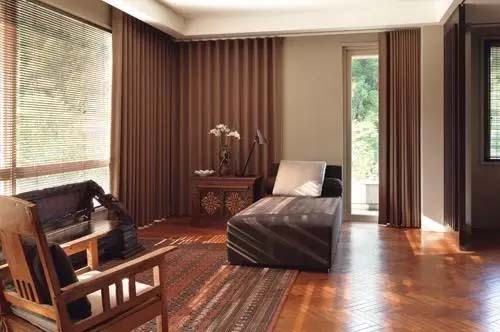
It is important to consider how much natural light the room will let in during the day, and if there is little natural light, whether the functional requirements require a lot of artificial light (e.g. in an office or a kitchen) or whether a soft light is needed (e.g. in a bedroom).
If the room has multiple functions (e.g. kitchen/living room), do you need to have both brighter and dimmer lighting? You also need to consider what type of lighting fixtures or lighting combinations you want in each room (e.g., ceiling pendants, table lamps, floor lamps) and whether you need to highlight certain items in the room (e.g., paintings or fireplaces).
Principle 5: colour selection
Colour has a significant impact on our vision and mood, no less than decoration. Therefore, choosing the right colour palette is an important part of creating an atmosphere.
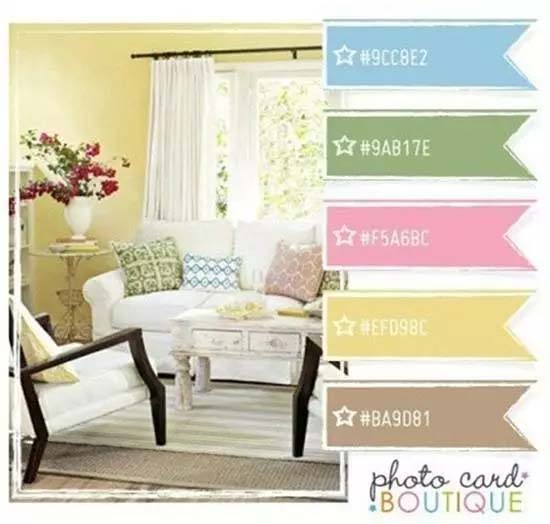
◆ Consider how the room will be used and whether pretty or cosy colours are appropriate.
◆ If the room is dark and small, you can use bright colours to make the room look spacious and bright.
◆ If the room needs to be warm and cosy, you can use warmer or darker colours that are a little on the reddish side.
◆ You also need to think about how you will mix and match colours in a house – will you choose neighbouring colours, contrasting colours or a unique combination of colours?
Principle 6: matching pattern and texture
Colour is an important part of the decorating scheme, but essentially needs to be linked to pattern and texture. A room with plain solid tiles and flat, unglossy fabrics can look dark and drab. Conversely, a room with floral rugs, good upholstery and cushions embroidered with beautiful patterns will be more moody and diverse. Find the perfect balance between leaving space and decorating.
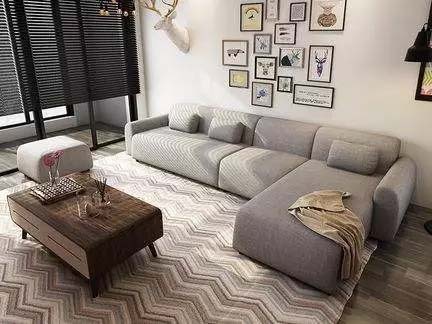
◆ Consider what materials work well together (take into account their contrast and tactility).
◆ Whether you want the furniture to be bright or shiny or to reflect a cosy atmosphere.
◆ What role the room will play.
◆ If you’re using multiple patterns, make sure they complement each other rather than look crowded.
◆ Work to find a balance so that the scheme doesn’t look overly cluttered.
Principle 7: mood board and budget development
After completing the space assessment, determining the function of the use, and styling with colour and texture choices, it’s now time to put all the information together and make a decision.
Professional designers and interior decorators use a tool called a mood board, which is a white card or a bulletin board that presents images full of inspiration and samples that can be matched.
Next comes the question of budgeting the project: you need to estimate the costs (including materials, paint, transport and professional decorating costs) and work out a timetable for completion and a sequencing schedule.
Principle 8: highlight focal points and features
A focal point is what catches people’s eyes as soon as they enter a room; it might be a fireplace, a white lampshade, a beautifully painted picture or a stunning view from a window.
◆ It is important to consider whether there are attractive and unique features inside the space.
◆ Are there areas that need to be covered up and where you want someone’s first focus to be when they enter the room.
◆ Is there a dominant colour in the room that will stand out.
Principle 9: display and storage design
Display and storage can be combined into one, as in some instances the two can be integrated. For example, in a dining room, a gleaming wine glass rack is both an attractive part of the décor and provides a practical way to organise and store wine glasses. The areas where items are placed and displayed should be decorated to enhance the contrast with the items.
◆ Consider whether the client wants to have items for both display and storage.
◆ How to maximise the use of light and colour to highlight objects.
◆ Whether the storage room is a frequently used storage room that is accessed frequently or a seasonal storage room that is not visited more than a few times a year.
Principle 10: accessory selection
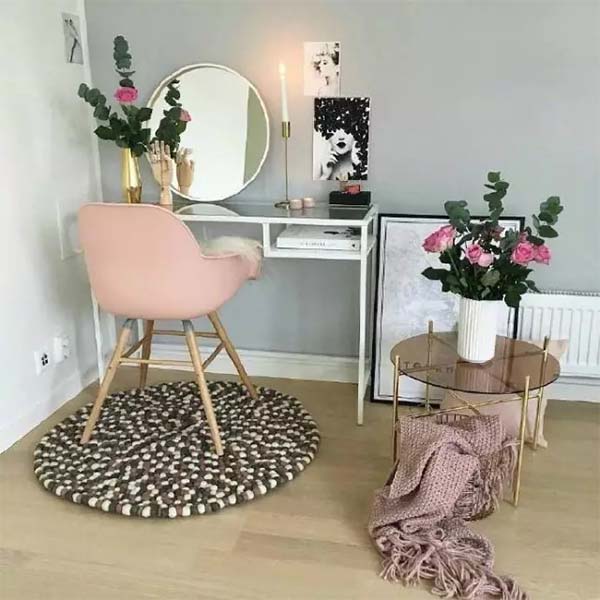
Accessories are the final element of a room; they are lightweight and mobile. Consider whether accessories are functional, whether they are easy and flexible to clean, and whether they provide the finishing touch to the colour scheme of the room.
Remember! In the future, even beginners will be able to do interior design on their own!


